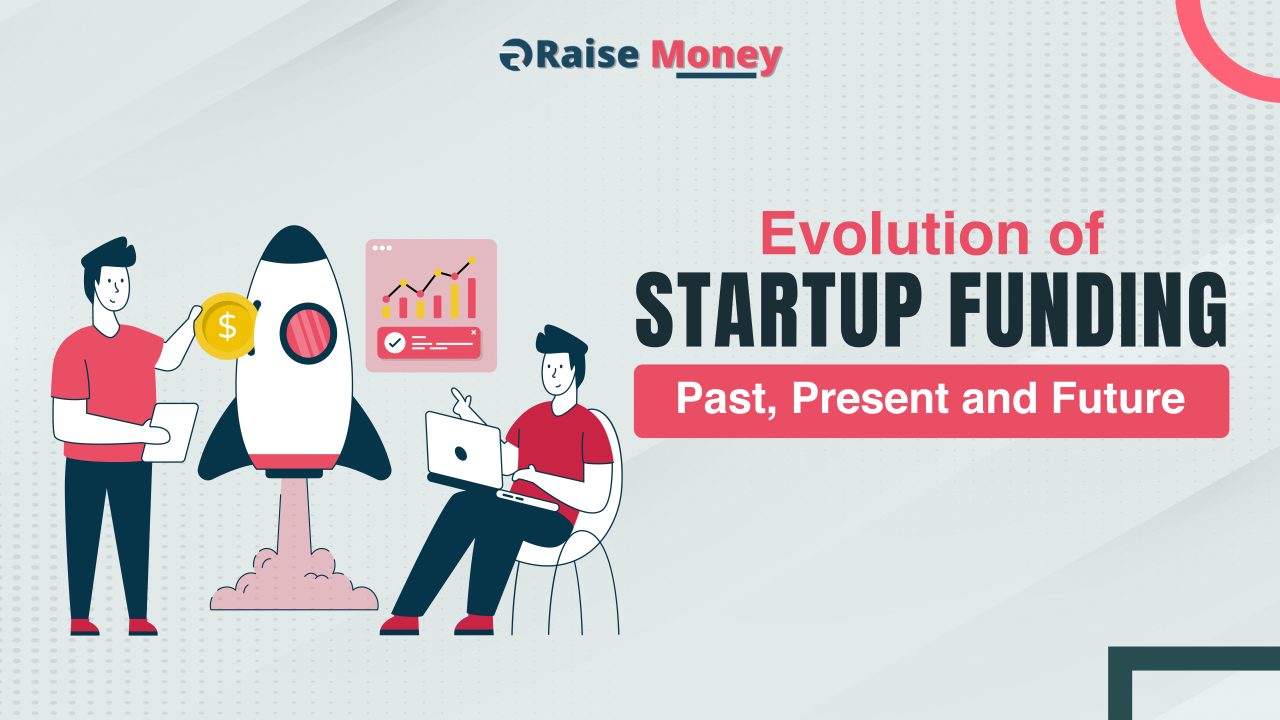
The Evolution of Startup Funding: Past, Present, and Future
Raising capital has always been a crucial step in building a successful startup. However, the way startups secure funding has changed drastically over the decades. From traditional bootstrapping to the rise of venture capital and new-age funding options like crowdfunding and decentralized finance, the startup funding landscape continues to evolve. Understanding this evolution not only helps entrepreneurs navigate their funding journey but also prepares them for the future. In this blog, we’ll explore the past, present, and future of startup funding, along with key insights into investor expectations and emerging trends.1. The Early Days: Bootstrapping & Angel Investors
In the early days of entrepreneurship, most startups relied on personal savings, family and friends, or bank loans to get their business off the ground. Bootstrapping was the go-to method, ensuring founders retained full ownership but often at the cost of slower growth. Over time, angel investors emerged as a critical source of early-stage funding. These wealthy individuals provided capital in exchange for equity, often mentoring founders as they built their businesses.Key Takeaways from the Past:
- Funding was limited to personal networks and bank loans.
- Investors focused on passionate founders and high-growth potential.
- Angel investors played a crucial role in providing both capital and mentorship.
2. The Rise of Venture Capital & Institutional Investments
As startups began to scale beyond traditional funding, the Venture Capital (VC) model gained popularity in the mid-20th century. VC firms pooled investments from multiple sources and injected large amounts of capital into high-growth startups, particularly in the tech sector. This era also saw the rise of structured funding rounds—Seed, Series A, B, and beyond—allowing startups to scale in a phased manner. As companies matured, they also explored private equity, corporate investments, and even government grants for expansion.What Investors Look for Today:
✔ A scalable business model with clear revenue generation. ✔ Market validation and early traction. ✔ A strong founding team with relevant experience.3. The Present: Diversification of Startup Funding
Today’s startup ecosystem offers a diverse range of funding options beyond traditional venture capital. Startups can now leverage:- Crowdfunding – Platforms like Kickstarter and Indiegogo allow startups to raise funds directly from consumers.
- Revenue-Based Financing – Startups can raise capital without giving up equity by repaying investors through future revenue.
- Venture Debt – A non-dilutive funding method that provides startups with capital while retaining ownership.
- Government Grants & Accelerators – Programs designed to support early-stage businesses with funding, mentorship, and networking opportunities.
How to Secure Funding Today:
✔ Develop a strong Unique Value Proposition (UVP) to stand out from competitors. ✔ Showcase early traction and customer engagement. ✔ Highlight a scalable and sustainable growth strategy.4. The Future of Startup Funding: What’s Next?
As technology advances, new funding models are emerging to provide more accessible and efficient capital solutions for startups. Some of the biggest trends shaping the future include:- Decentralized Finance (DeFi): Blockchain technology is enabling peer-to-peer funding without intermediaries, making investments more accessible.
- AI-Driven Investment Platforms: Artificial intelligence is being used to match startups with the right investors, automating due diligence and improving decision-making.
- Sustainability & Impact Investing: More investors are focusing on Environmental, Social, and Governance (ESG) factors, prioritizing startups that drive social and environmental impact.
What Startups Must Prepare For:
✔ A strong digital presence will be crucial for attracting investors. ✔ Investors will expect higher transparency and accountability in business operations. ✔ Sustainability and ethical investing will play a significant role in funding decisions.5. The Role of Exit Strategies in Startup Funding
Investors don’t just invest in startups for short-term gains—they seek a return on their investment through an exit strategy. The most common exit strategies include:- Acquisition: A larger company buys the startup, offering a return to investors.
- Mergers: Two companies combine to create a stronger market presence.
- Initial Public Offering (IPO): The startup goes public, allowing investors to cash out their equity.
How to Develop an Exit Strategy:
✔ Identify potential acquirers and industry trends. ✔ Showcase how your startup can scale to become IPO-ready. ✔ Align your strategy with investor expectations to maximize returns.6. Frequently Asked Questions (FAQs)
- What are the primary stages of startup funding? Answer: The main stages include Bootstrapping, Seed Funding, Series A/B/C, and IPO or acquisition.
- How do investors evaluate startups today? Answer: Investors assess factors such as market potential, scalability, financial projections, and the strength of the founding team.
- Is crowdfunding a reliable way to raise capital? Answer: Yes, if used effectively, crowdfunding can provide early traction, validation, and necessary capital for startups.
- What role does sustainability play in modern startup funding? Answer: Investors increasingly prioritize startups that align with ESG (Environmental, Social, Governance) principles and sustainable business practices.
- How does venture debt differ from traditional venture capital? Answer: Venture debt provides startups with funds while allowing them to retain ownership, unlike VC, which requires equity dilution.
- What is the best way to secure startup funding in 2025? Answer: Having a scalable business model, strong market validation, and leveraging emerging funding options like AI-driven investments and DeFi can improve your chances.
